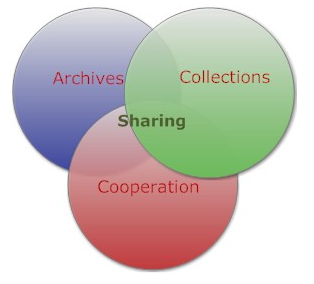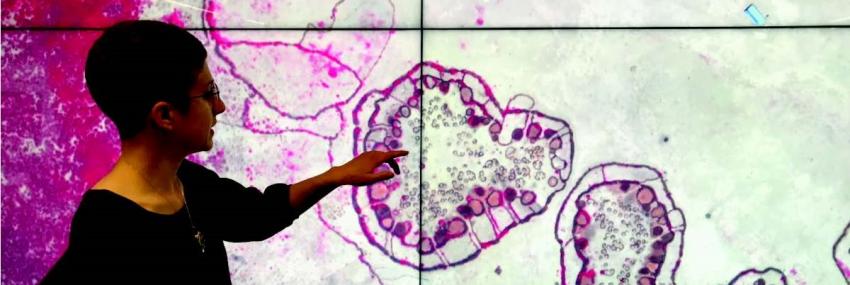Event Logistics
In July 2003 CRL organized the Preserving America’s Print Resources (PAPR) conference, which explored the challenges faced by libraries in sustaining print collections at a time when digital resources were fast becoming the preferred sources for researchers. As the center of gravity for libraries continues to shift from print to digital, the need for rational and sustainable provisions for print is growing.Given the traction that shared print and archiving efforts have gained since 2003, it is now an appropriate time to examine the results of our collective efforts and determine where to go from here.
The purpose of the PAPR II gathering is to formulate a common vision for the further development and growth of shared research library collections, and to determine priorities for CRL support of same, in order to prevent the loss of critical print journals and government publications
The summit is made possible by the generous support of the Andrew W. Mellon Foundation and the CRL community of member libraries.
Related Documents
Event Location and Directions
AGENDA
Welcome and Overview: Where We Are and What Has Changed Since the 2003 PAPR Conference
10:00–10:10 a.m.
Bernard Reilly (President, CRL)
Part 1: The Data We Have and What They Tell Us
The Data We Have 10:10–10:45 a.m.
Amy Wood (Director, Technical Services, CRL) and Constance Malpas (Research Scientist, OCLC)
- What and how much data have we been able to collect?
- How has this data been generated?
- What have we learned about the obstacles to getting good holdings data?
What the Data Tell Us 10:45–11:15 a.m.
Amy Wood (CRL) and Constance Malpas (OCLC)
An appraisal of the aggregate archive coverage of serials in key fields to date (Law and Government; Science, Technology and Engineering; Agriculture, etc.)
- What are the areas of significant redundancy and concentration?
- Where are we thin on the ground?
- What does this data suggest about archiving needs, in terms of the coverage of all subjects and fields?
Related Documentation
- The Data We Have and What it Tells Us (slides)
What the Information We Have About Programs Tells Us 11:15–11:45 a.m.
Marie Waltz (Special Projects Manager, Certification of Digital Repositories, CRL)
- What do we know about system risk and assurance based on program characteristics?
- How can we best measure and evaluate the strength of repository programs?
- What are the limits and obstacles to further sharing of operational and qualitative information about archive programs?
Related Documentation
- What the Information We Have About Programs Tell Us (slides)
Part 2: How Do We Improve on Our "Safety Net"?
Panel Discussion 1:
The Collection Development and Management Viewpoint: Reflections on the Strength of Our “Safety Net” and Possibilities for Collaboration 12:00–1:05 pm
Mark Sandler (Center for Library Initiatives, CIC)
Tom Teper (University of Illinois / HathiTrust)
Kent McKeever (Director, Arthur Diamond Law Library, Columbia University Law School)
Steve Bosch (University of Arizona / WEST)
Martha Hruska (Associate University Librarian, Collection Services, University of California, San Diego)
Caitlin Tillman (Associate Chief Librarian for Collections and Materials Management, University of Toronto / Downsview 5)
Panel Discussion 2:
The Shared Print Management and Planning Viewpoint: Present Needs and Potential Areas of Synergy 1:05–2:25 p.m.
John Burger (Executive Director, ASERL)
Emily Stambaugh (Program Manager, WEST, and California Digital Library)
Kathleen Richman (Executive Director, Law Library Microform Consortium)
Amy Greenberg (Collaborative Futures Project Manager, Ontario Council of University Libraries)
Mike Furlough (Executive Director, HathiTrust)
John Unsworth (Vice Provost for Library & Technology Services and Chief Information Officer, Brandeis University / EAST)
Open Discussion:
Areas of Consensus on Needs and Next Steps. 2:25 - 3:15 pm
Bernard Reilly, CRL
Part 3: Where Do We Go from Here?
“Taking Stock: Sharing Responsibility for Print Preservation.” 3:20–4:00 p.m.
Roger Schonfeld (Director, Library and Scholarly Communication Program, Ithaka S+R)
CRL Report on PAPR II Outcomes and Next Steps
Event Location
Directions from the Moscone Convention Center to the Educational/Psychology Library in Tolman Hall:
- The Bay Area Rapid Transit (BART) trains go to within a few blocks of Tolman Hall. Catch the BART train at Powell Street, near the Moscone Convention Center. Take the Richmond-Daly City line (toward Richmond) to Downtown Berkeley (25 minutes).
- From the Downtown Berkeley BART station, walk up Center Street to Oxford Street (this is the edge of campus). Turn left on Oxford Street and walk through 2 lights to Hearst Street. Turn right on Hearst Street and walk up to the next light,
- Tolman Hall is the third building on your right, with the walk-through breezeway. You can enter at this level on the left and take the elevator to the 2nd floor. Or you can walk through the breezeway, follow the path to the left and walk around to the left patio entrance on the 2nd floor. The Education Psychology Library entrance is on the right side of the hallway, 2600 Tolman Hall.



